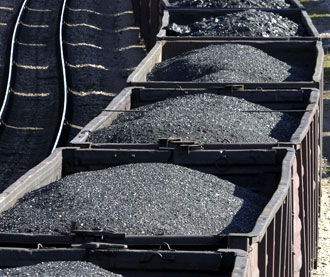 South Africa’s economy has grown by two-thirds since 1994 and its demand for electricity has kept pace. But, despite near-perfect wind conditions, its minister of finance, Pravhin Gordhan, has decided to keep coal at the heart of the country’s energy policy.
South Africa’s economy has grown by two-thirds since 1994 and its demand for electricity has kept pace. But, despite near-perfect wind conditions, its minister of finance, Pravhin Gordhan, has decided to keep coal at the heart of the country’s energy policy.
Here’s his logic:
1. Local coal resources are abundant and cheap.
2. Coal plants can be built faster and require less maintenance than nuclear reactors.
3. Brownouts are not an option in South Africa. (When energy demand exceeds supply in the U.S., the lights dim — when it happens in Africa, thousands may go without clean water or safe food).
4. Five other countries rely on South Africa for electricity. Failing to meet this demand could send these satellites deeper into poverty, and strain relations.
5. Coal keeps South African miners employed. The industry accounts for 18 percent of the country’s GDP.
Gordhan isn’t necessarily the world’s biggest fan of coal. He emphasized that he would prefer that the country invest in renewable and nuclear sources of energy, but that the money and technology just aren’t there. If there was any other way to meet the region’s power needs, South Africa would be interested, he said.
Instead, the country is seeking a $3.75 billion loan from the World Bank, with $3 billion of it going toward the construction of a cutting edge coal-fired power plant capable of generating 4,800 megawatts. The remainder will be used to fund efficiency, wind and concentrated solar projects.
Gordhan’s recent editorial in the Washington Post takes the issue of climate change head on. He outlines South Africa’s plan to lower carbon intensity by 43 percent before 2025. This is a pretty ambitious goal for a developing country.
If the loan comes through as planned, wind projects will probably crop up near Cape Town. Located on the southwestern coast of the nation, the city is ideally situated for wind farms. It even blows reliably during peak hours every day. Nationwide, South Africa is predicted to have wind power capacity equivalent to 70 percent of it’s total energy demand.
There’s one major obstacle standing in its way: a distinct lack of government incentives. Without the government playing an active role in renewable energy development, like in Germany, Spain and the U.S., it’s up to the market to make solar and wind competitively cheap. In a country with 24 percent unemployment, money is always the deciding factor.
South Africa’s power mix is already 90 percent coal. This is a pretty big tide to turn back.
VentureBeat's mission is to be a digital town square for technical decision-makers to gain knowledge about transformative enterprise technology and transact. Learn More
